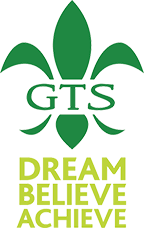Design Technology
Subject Lead - Mrs Dee Harman, 01805 623531 Ext. 344 or dharman@gts.devon.sch.uk
Teachers - Mr Simon Ashby, Mrs Michelle Ellis
Technician - Mrs Rachel Coles
Design and Technology is key to developing critical and creative thinkers, allowing pupils to evaluate and understand how everything around them is designed and made. At Great Torrington School pupils are given the opportunity to make their own choices, problem solve and build up a resilience within their own working practice, enabling them to become reflective thinkers.
Pupils will demonstrate their knowledge and skills, often by producing a portfolio or a physical product while working within a brief. They will demonstrate safe working practices, while working individually and show an ability to critically evaluate and select appropriate working methods within a variety of material areas.
Intent
- To build a Design and Technology curriculum which develops learning and results in the acquisition of academic knowledge and skills by:
- Enabling pupils to develop the skills they need for designing and making through a range of creative and practical activities.
- Developing pupils’ ability to investigate, analyse and evaluate, applying their understanding and technical knowledge across a range of products and materials, reflecting the real world.
- Providing the academic building blocks to be able to proceed to study STEM related subjects through apprenticeships or academic institutions.
Curriculum and Qualifications
Key Stage 4
At key stage 4, pupils have the option to study GCSE Design and Technology or NCFE Level 1/2 technical award in Engineering.
For more information please view the NCFE website: https://www.ncfe.org.uk/qualification-search/qualification-detail/ncfe-level-12-technical-award-in-engineering-671
Exam Board - WJEC Eduqas GCSE Design and Technology
GCSE Design and Technology prepares pupils to participate confidently and successfully in an increasingly technological world. Pupils gain awareness and learn from wider influences on Design and Technology including historical, social, cultural, environmental and economic factors. Pupils get the opportunity to work creatively when designing and making and apply technical and practical expertise.
GCSE Design and Technology allows pupils to study core technical and designing and making principles, including a broad range of design processes, materials techniques and equipment. They also have the opportunity to study specialist technical principles in greater depth.
Assessment
The GCSE has two assessment components:
Non Examination Assessment (50%) – A design and make project consisting of a folder of 20 x A3 sheets of drawings, models and a final prototype which responds to a context set by AQA in June of year 10.
Synoptic paper (50%) – A 2 hour examination
The examination paper and non-exam assessment (NEA) will measure how pupils have achieved the following assessment objectives:
- AO1 - Identify, investigate and outline design possibilities to address needs and wants
- AO2 - Design and make prototypes that are fit for purpose
- AO3 - Analyse and evaluate design decisions and outcomes, including for prototypes made by themselves and others, and wider issues in design and technology
- AO4 - Demonstrate and apply knowledge and understanding of 'technical' principles and 'designing and making' principles.
The examination paper requires pupils to demonstrate their application of maths and science-based knowledge when applied to Design and Technology.
